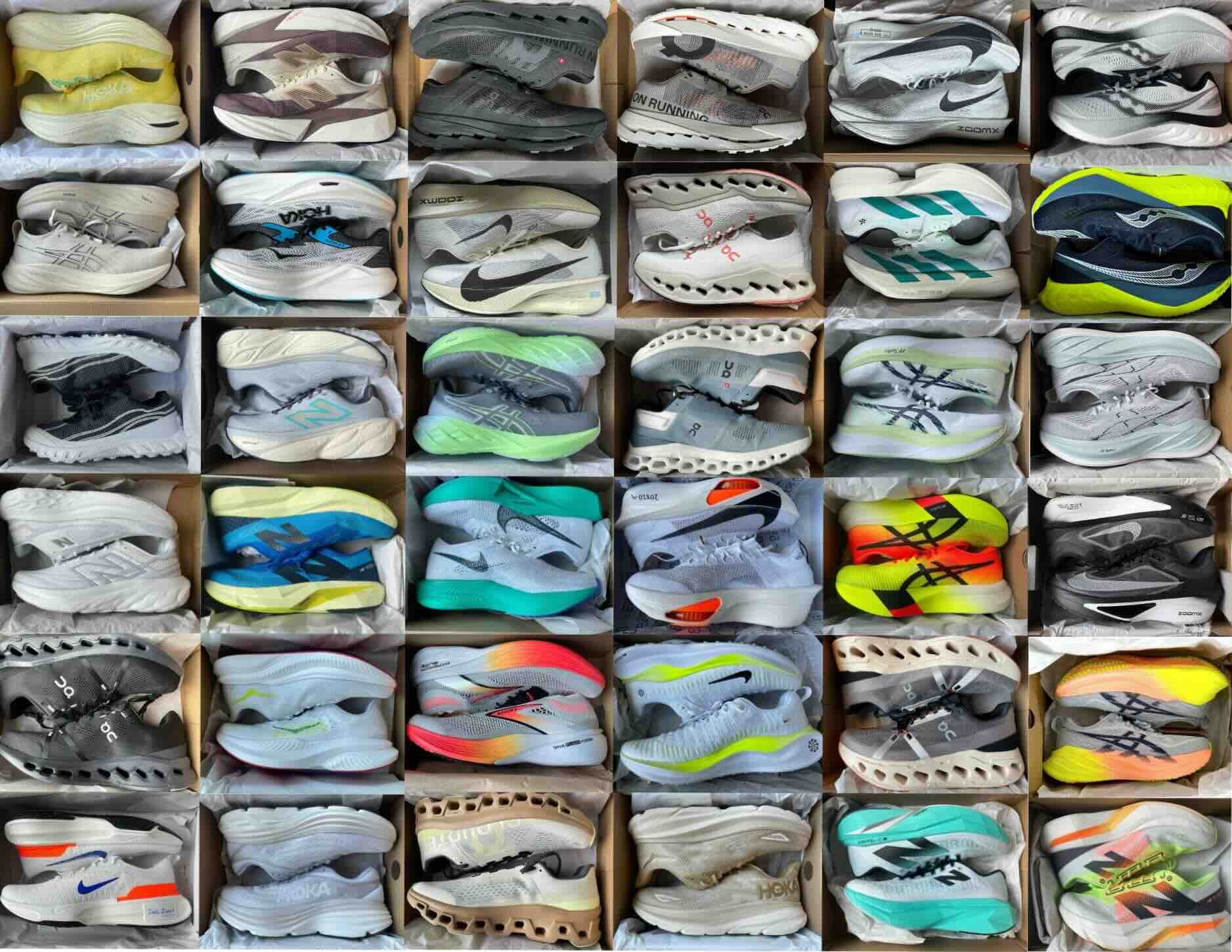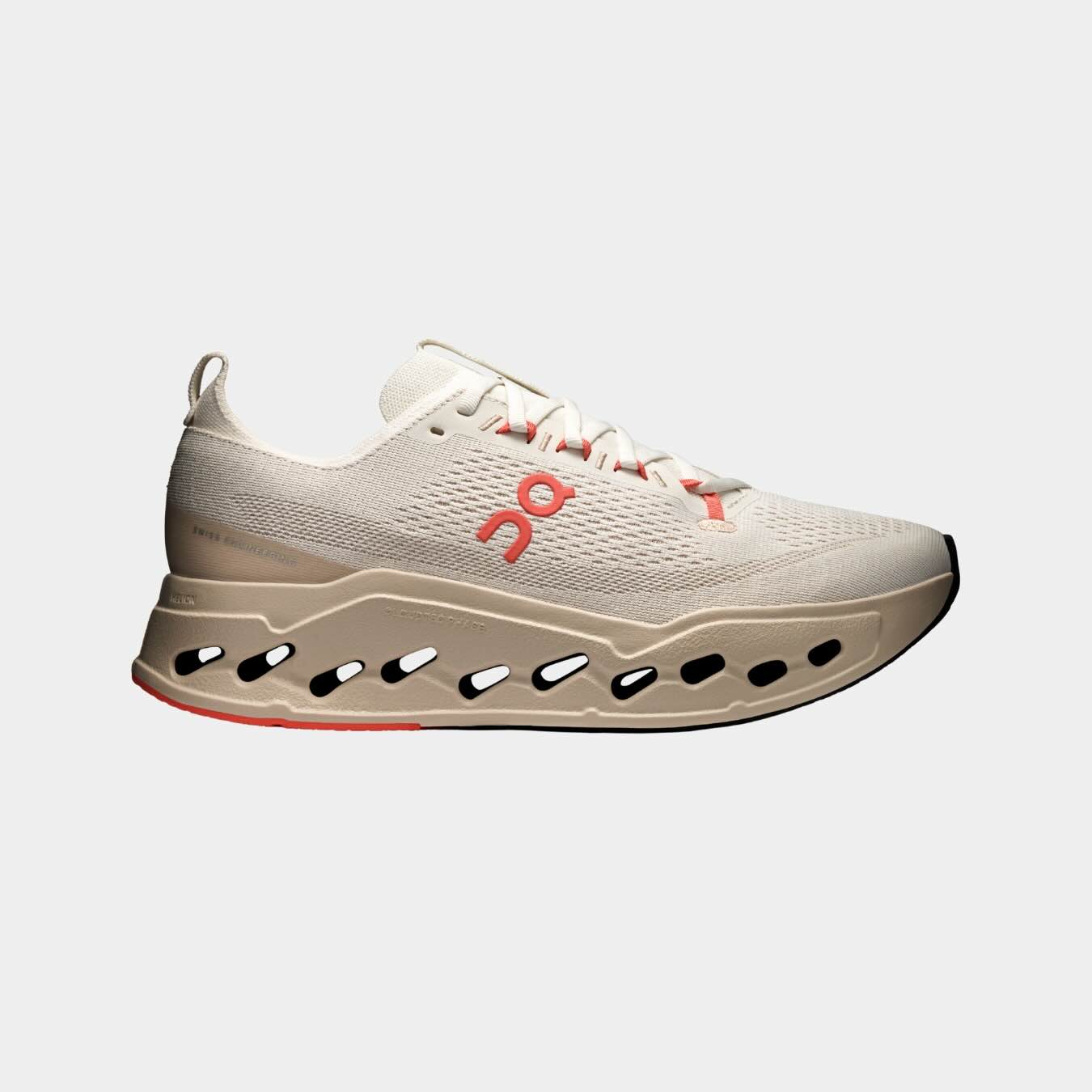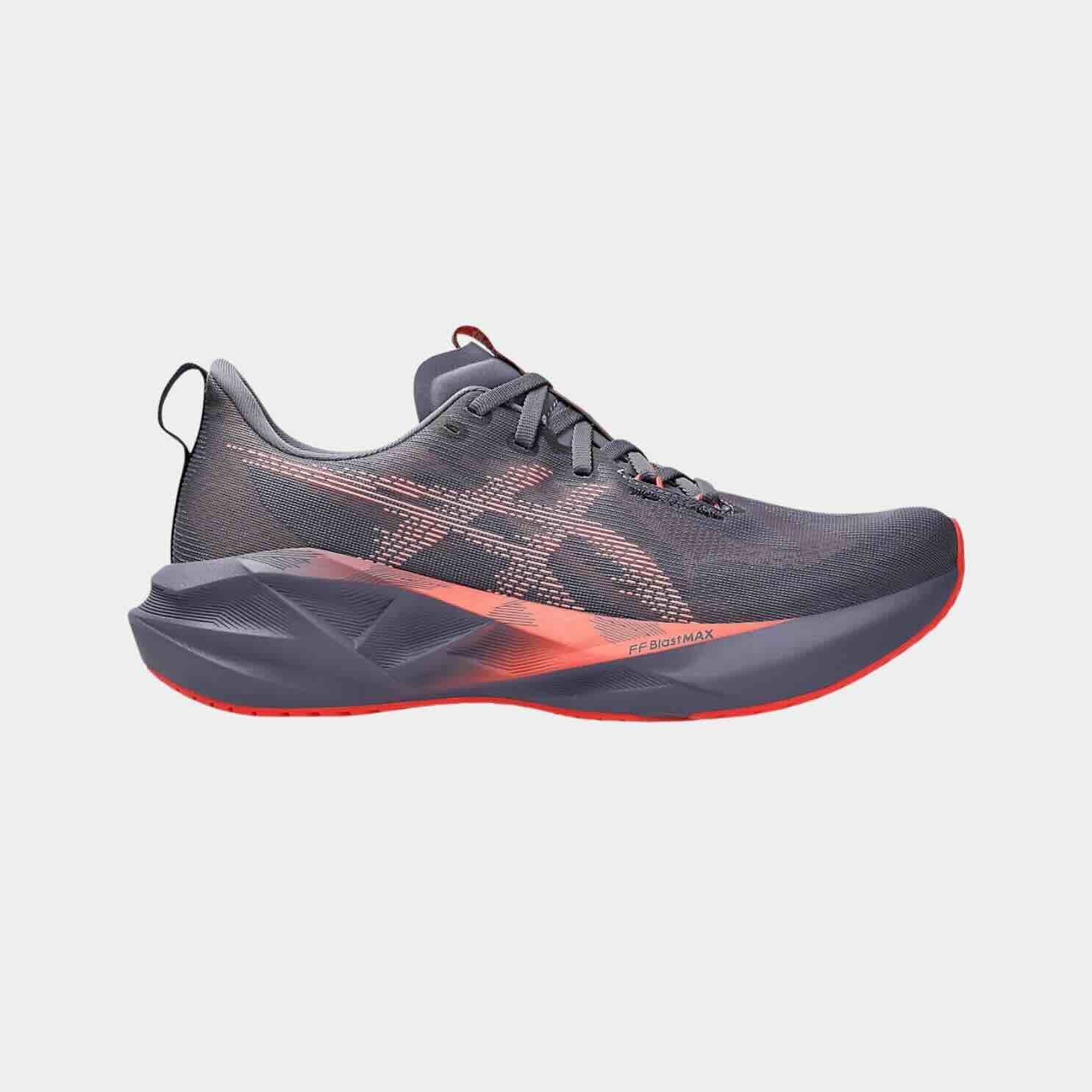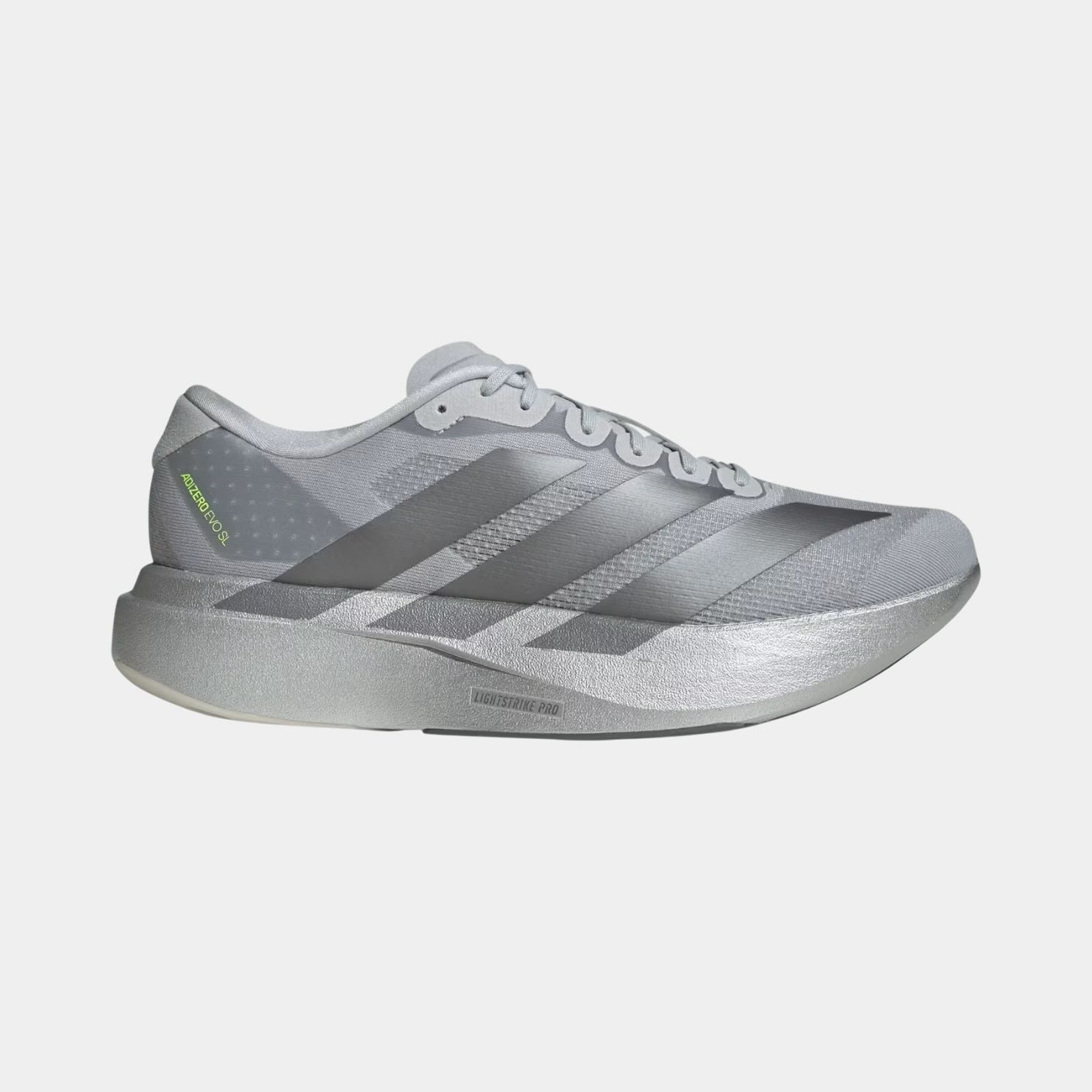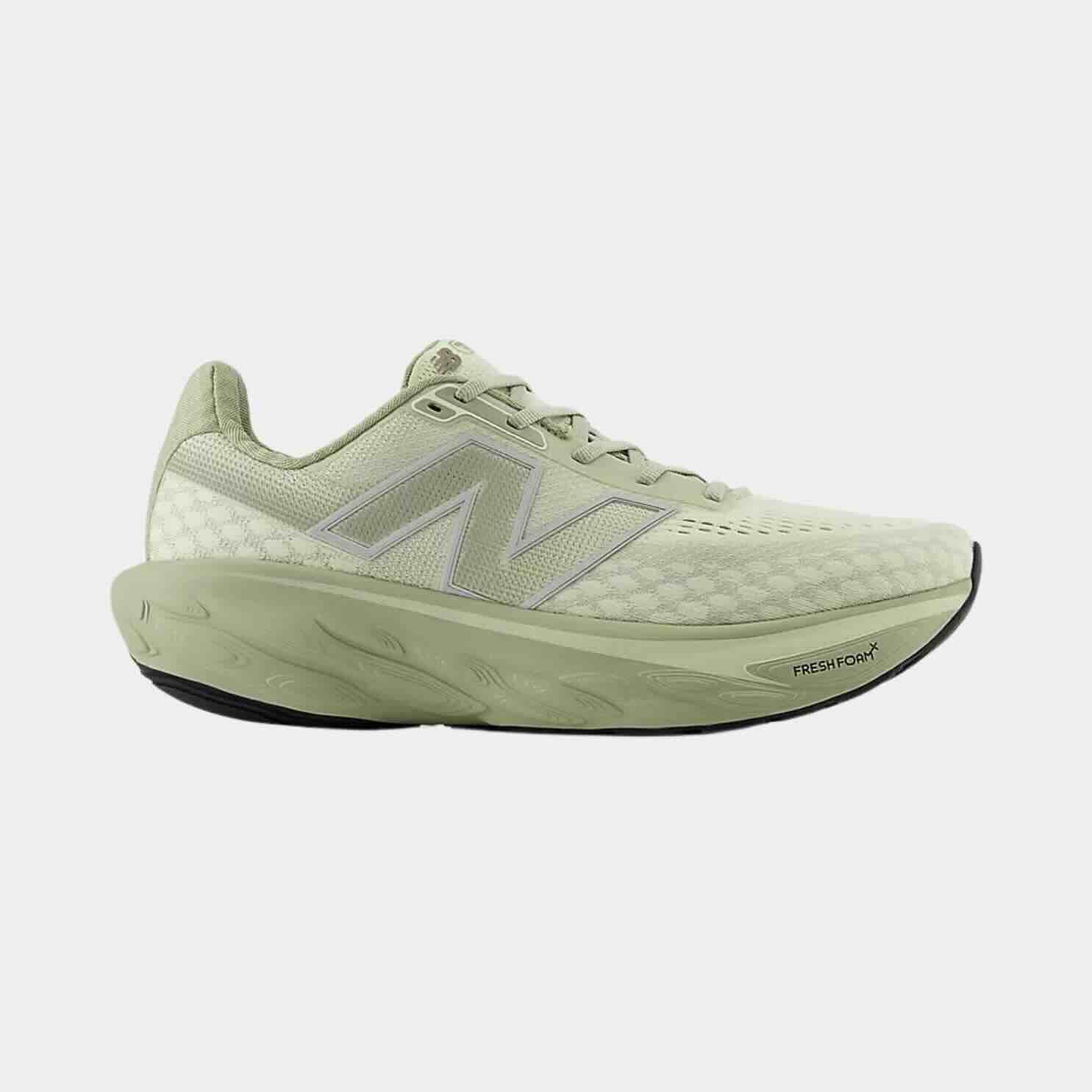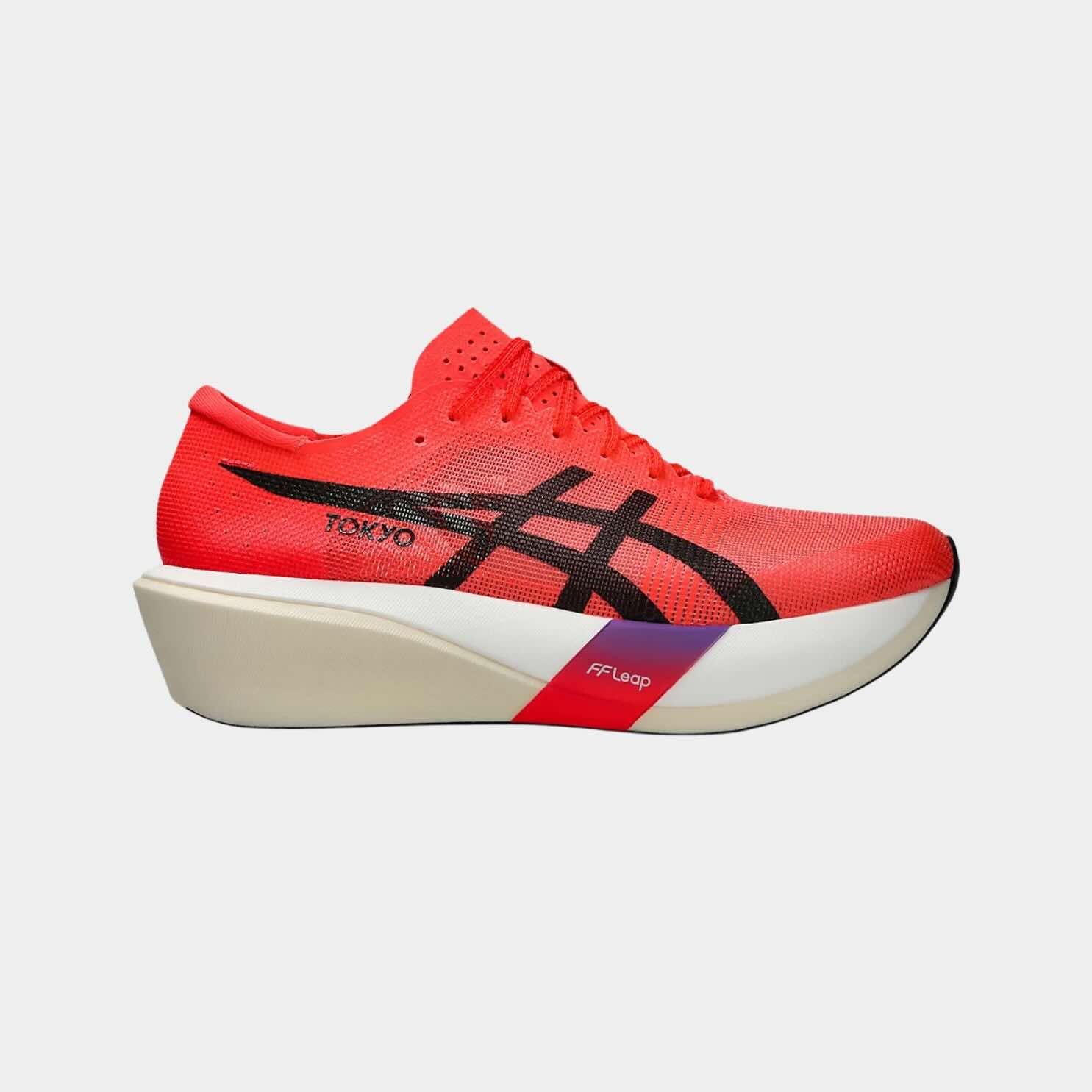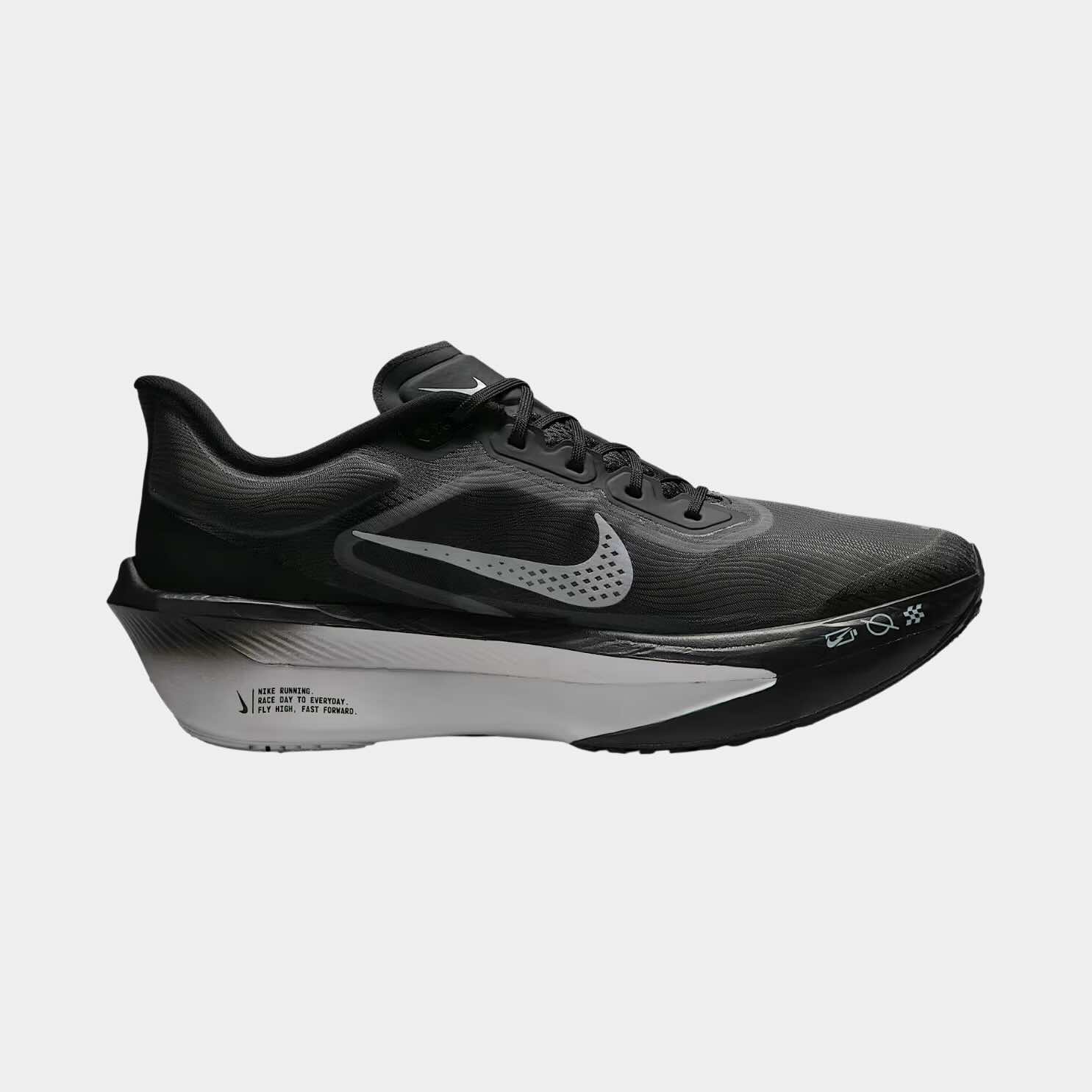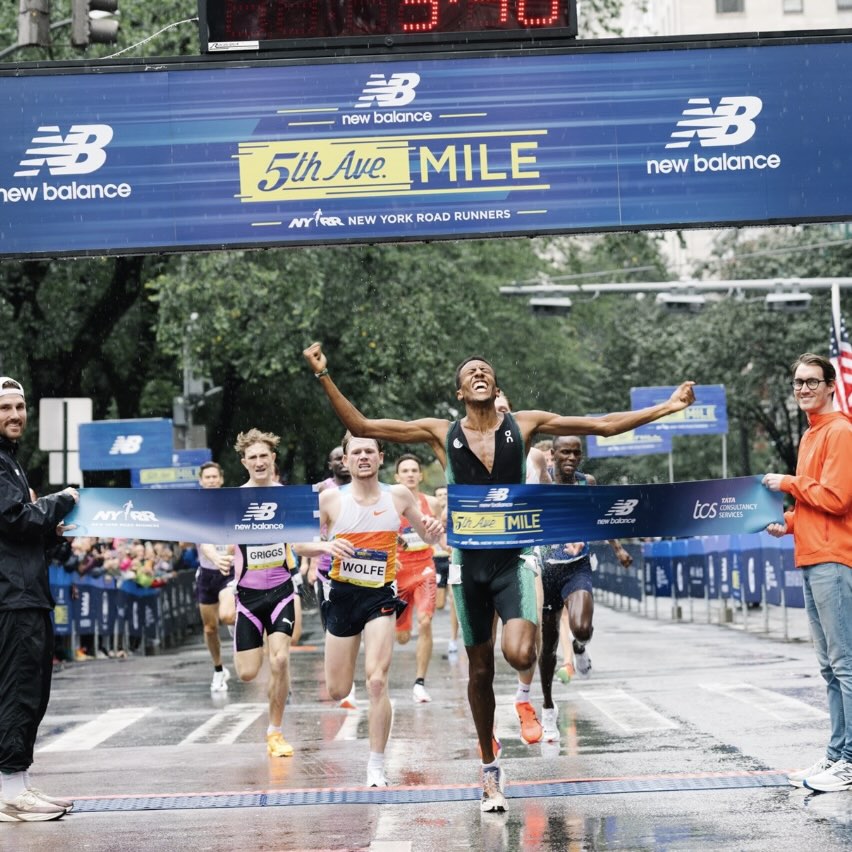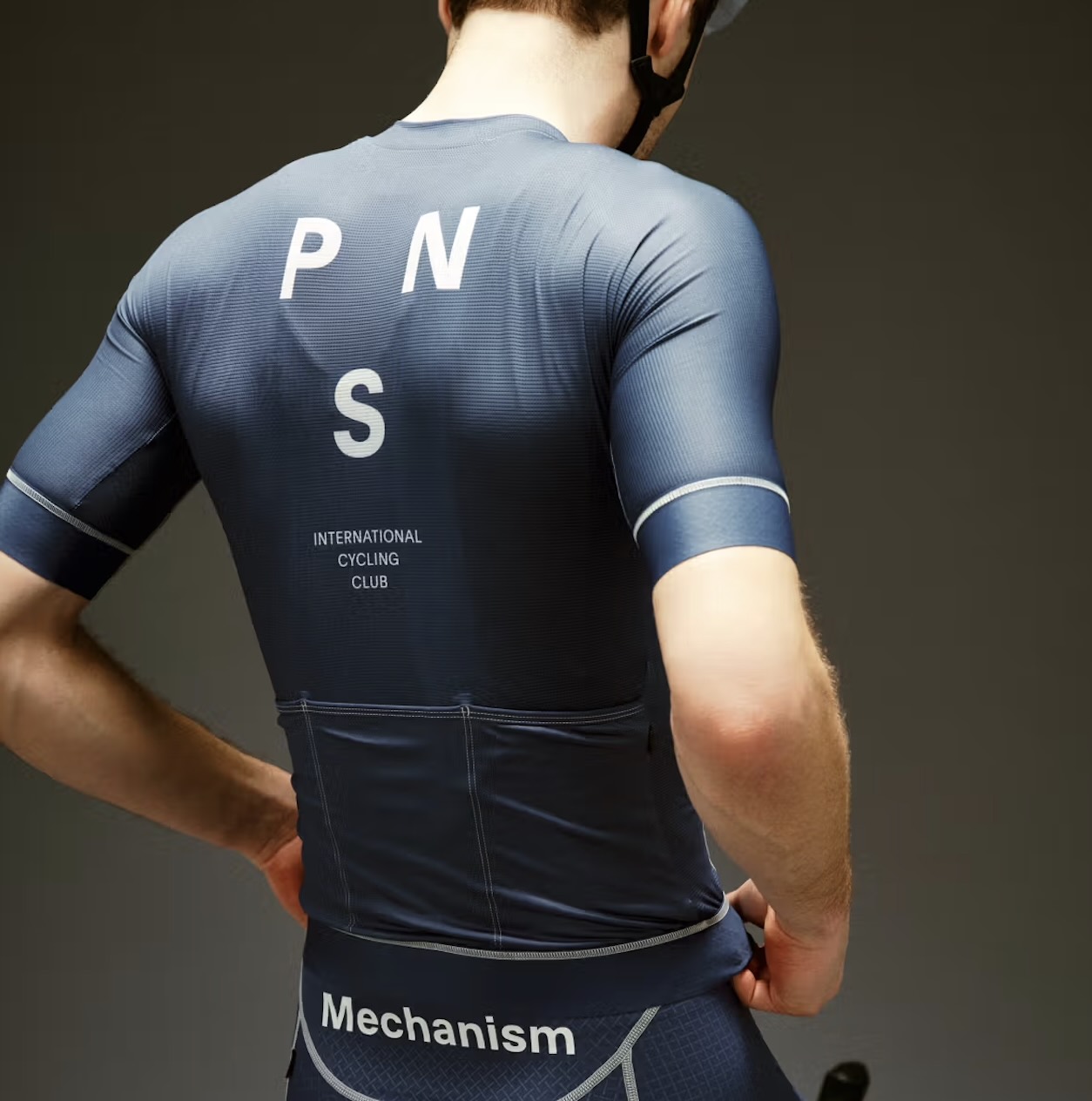Our team is dedicated to finding and telling you more about the web’s best products. If you purchase through our links, we may receive a commission. Our editorial team is independent and only endorses products we believe in.
We like
We don't like
Having the right pair of running shoes can make all the difference. But it can be overwhelming to know what to look for, especially if you’re just starting to get into the sport.
There’s a lot of brand marketing and review site jargon that claims: this is the fastest shoe, or, this is the most comfortable shoe. But the big secret is that there is no “best” running shoe because every runner, foot, and stride is different. The best running shoe is simply the one that fits the way you run.
Some running shoes are big and cushioned. These are your daily trainers, designed for everyday use at slower paces. They’ll typically use some type of cushioning technology to help lessen the impact of every strike to ease wear on your joints.
Then you have running shoes that are more responsive, lightweight, and narrow. These are your race or speed shoes, also known as plated running shoes. They use “energy-return” technology in the form of a carbon plate to compress the foam lining in your shoe, causing it to expand more quickly, and then redirect that energy into each new step.
There’s also an emerging category called super trainers, which promise the best of both worlds––plenty of cushioning and stack height with a more stable upper, paired with energy-return technology. In fewer words: a comfortable shoe that can also go fast.
For this guide we round up our favorite running shoes within each of these three categories. But as mentioned above, shoe preference can be highly personal. So while we’ve highlighted shoes that were the most common favorites amongst a selected group of testers, our recommendations may not matter unless the shoe works for you and how you run.
The best way to truly figure this out is a visit to your local speciality running store (if possible). There you’ll find seasoned running experts who can evaluate your running style from a short jog on an in-store treadmill. They’ll also offer a wider selection of brands and styles to test out compared to a trip to a specific brand’s retail store.
How to talk about running shoes
Learning the language of running shoes can help you better understand which shoe will suit you best. Here are a handful of things to consider before you buy your first (or next) pair of running shoes.
Neutral vs. stability: Most running shoe brands will divide their assortment into ‘neutral’ and ‘stability’ shoes. On the surface, these types of shoes do exactly what you’d think: neutral shoes provide cushioned support for the natural rolling motion of your foot, whereas stability shoes are made with correcting features to address those with flat feet (underpronation) or high archers (overpronation). That means for those with normal-sized arches, neutral shoes will fit you best since you don’t want to overcorrect a good thing.
Heel-to-toe drop: The difference in height between your heel and forefoot. For instance, in a shoe with a drop of 8mm, your heel will sit 8mm higher than your forefoot. Shoes with a lower drop tend to place more load on the ankles, while shoes with a higher drop will place more load on the knees and hips. Picking the right drop height usually comes down to personal preference, and it’s recommended you take note of what feels most natural to you during a few test runs.
Stack height: The highest measured point on the sole, or in other words, how much cushion is between your foot and the ground. Stack height is another variable that comes down to personal preference. It’s usually, though not always, associated with the level of cushioning a shoe has. There’s a pretty simple relationship between heel drop and stack height: measure the stack height at the heel and the toe, and the difference between the two is the heel drop. Most running shoes have a stack height ranging from 20 to 40mm; anything over 40mm is considered illegal for road races, and anything over 25mm is prohibited for track races.
Weight: The weight of your running shoes is worth noting because it can mean the difference between feeling like you’re running on air or with sandbags. Generally speaking, running shoes fall into four weight categories: ultra light (<240g), lightweight (240–280g), medium (280–320g), and heavy (>320g). Carbon plated speed shoes will usually weigh the lightest, whereas exceedingly cushioned stability shoes will land on the heavier side. If you’re a recreational runner and don’t pay much attention to your pace, the weight of your shoe may matter less.
Midsole / Foam: The midsole is the meat of a shoe. It represents the thick layer of cushioning that your foot will rest on for miles on end. It’s important to pay attention to how thick of a midsole you prefer, as well as what that midsole foam is made out of. Nearly every running brand has a name for the type of foam they use, like New Balance's FreshFoam or Asics’s FF Blast technology. You may find your foot responds better to certain types of foam compared to others. The midsole is also where speed shoes position the carbon plate, since it’s designed to compress the foam beneath it to maximize propulsion off the ground.
Upper: The upper, or top portion of the shoe (anything above the sole), can be one of the most overlooked components of a running shoe. It plays a crucial role in cradling the foot within the shoe to provide comfort, support, breathability, and durability during running. The upper can also heavily influence the weight of the shoe; for instance, speed shoe uppers are often made with an ultra-lightweight, breathable mesh that’s a lot thinner than most daily trainers. You want a shoe that can lace up and “lock in” your foot while providing just enough give.
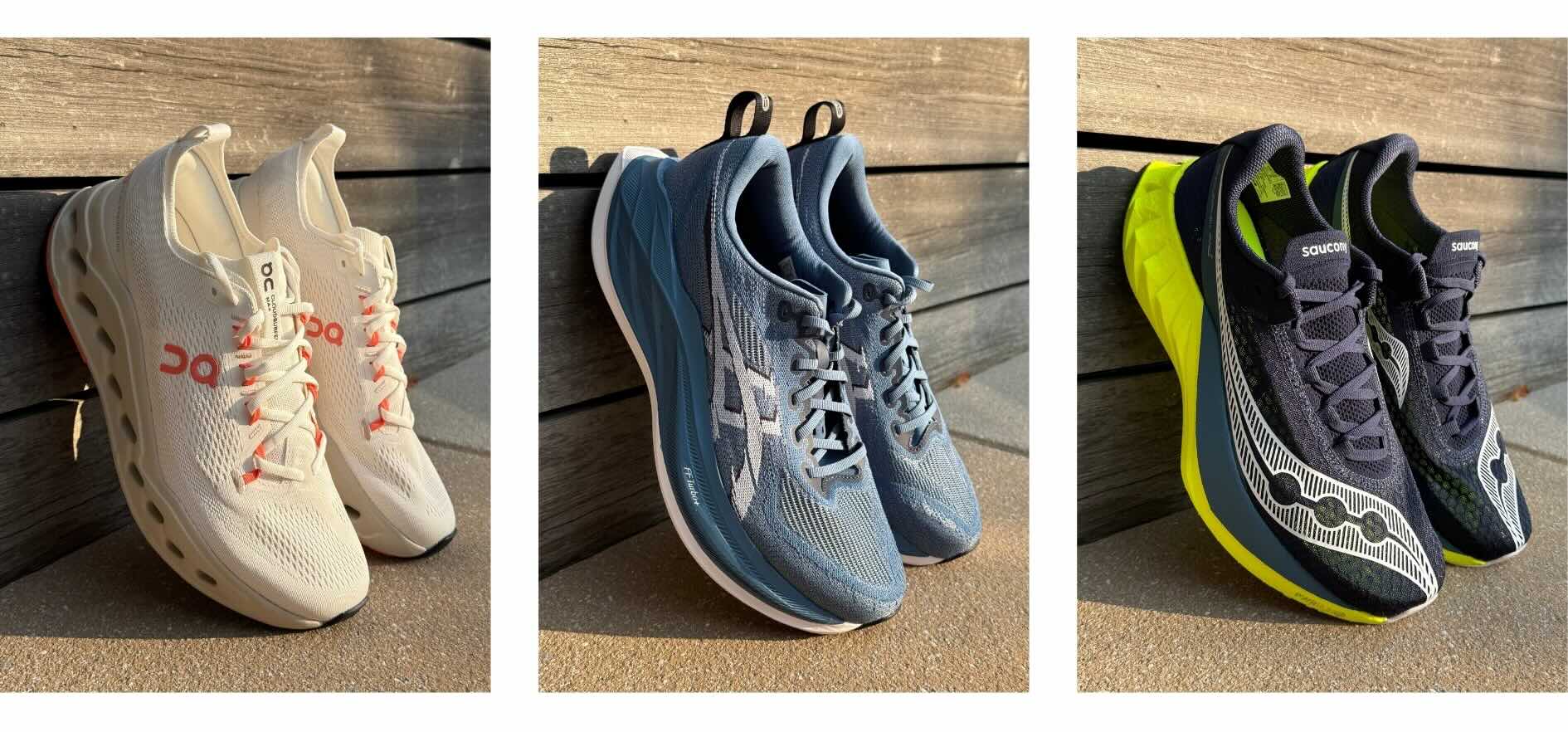
How to choose the right running shoes
Picking out the best running shoes is really a matter of two things: use case and personal taste.
Consider the type of runs you’ll be doing in the pair of shoes. If it’s easy runs, whether short or long, consider more cushioning. If it’s fast runs, either on the street or track, focus on weight and responsiveness. If you’re looking for something that’s highly versatile, consider something that offers a good mix of both. We’ll cover these three categories, which we’ll break into daily trainers, speed shoes, and super trainers below.
If you’re a frequent runner or are training for a specific event, you’ll likely want to have more than one pair of shoes in your rotation. That’s because you’ll want to match the type of shoe to the type of running you’ll be doing, which will likely vary quite a bit especially if you’re in a training block. Additionally, there’s emerging evidence to support the theory that rotating shoes can help prevent overuse injuries, since it forces your body to adapt to another shoe while activating slightly different muscle fibers. Many daily runners also prefer to rotate between shoes to allow one pair to “rest” while they wear the other. This can help the foam cells in the midsole decompress from extended use.
After you’ve defined your intended use case, it’s down to personal preference. Every foot and stride is different, so it’s always recommended you test as many shoes as you can until you find one that’s comfortable for how you run. There can be a lot of trial and error involved, even for advanced runners, so be patient. When a shoe truly fits, you’ll know.
The worst thing you can do is pick a running shoe based on style alone. Looking cool won’t matter if you’re sidelined by a preventable injury because you picked a shoe that catches attention but doesn’t support your running mechanics. I’d encourage you to pick shoes based on function first, fit second, and style last. Experienced runners will have tried countless pairs before discovering what works best for them, and I promise you it’s not because they’ve had trouble finding what looks stylish on them.
Everyday Trainers
These are your go-to shoes for everyday running, whether you’re a recreational runner who laces up on occasion or a competitive runner who is logging significant mileage. They’re reliable, comfortable, and don’t require much overthinking––just lace up and go.
The Novablast 5 delivers a smooth, soft, and versatile ride, whether you’re just starting out or replacing a well-worn pair of daily trainers. Its FlyteFoam Blast+ Max midsole offers generous cushioning without dulling the ride, making the shoe plush and comfortable on easy days, yet lively enough for longer runs and light tempo work. Underfoot, the trampoline-like bounce through the forefoot gives it a fun, springy feel, and the subtle rocker makes transitions smooth. The upper is made from a lightweight, breathable jacquard mesh and improves airflow over the previous woven version. The forefoot is generous, which may not suit narrow feet, but the gusseted tongue and well-structured heel keep the foot secure. Despite the added cushion and a 42 mm stack height, the shoe remains light, flexible, and impressively stable. I’ve already put over 100 miles into mine, and the ride remains just as fun and forgiving as day one. At $150, the Novablast 5 continues to be one of the best-value trainers out there, whether you’re just getting into running or looking for a reliable, high-mileage workhorse.
We like
We don't like
Adidas running shoes aren’t as popular in the US as they are internationally, but trust me when I say the EVO SL is worthy of every bit of attention it can get. It blends an elite-level ride with everyday utility thanks to a full slab of soft and bouncy Lightstrike Pro foam and an impressively featherweight body at just $150. Put more simply, it has a great midsole, sparse upper, and an affordable price tag––not to mention it’s one of the most attractive looking running shoes I’ve seen. It feels great on short easy runs, for longer runs, and even when you might have to pick up the pace during some spontaneous uptempo efforts. It’s hard to think of a reason to get another shoe if you’re new to the running game. If you want to feel some fun beneath your feet, look no further than the EVO SL.
We like
We don't like
If New Balance were to only make one running shoe, it would be the Fresh Foam X 1080. While the model’s popularity has ebbed and flowed over the years as different versions come and go, v14 offers some of the best that the 1080 series has had to offer. It maintains the perfect harmony of softness and bounce established in the v13, but with meaningful updates: a slightly firmer Fresh Foam X midsole, a gently widened base, and a breathable triple-jacquard mesh upper that’s stretchy yet structured. While there are some running shoes out there that are positioned to be “do it all” shoes, the 1080v14 is definitively not one of them. This isn’t a shoe I’d recommend for track workouts or race day. But it is a perfect, dependable daily trainer that most runners should be grabbing for 80% of their runs. It’s a shoe that eats up plenty of easy miles, and you’ll enjoy every one of them.
We like
We don't like
Built on the legacy of the Cloudeclipse (a shoe I had a love-hate relationship with), the Cloudsurfer Max is a new daily trainer from On that brings ultra cushioning and comfort to their popular Surfer series. Sitting on a high-stack platform (36 mm heel, 6 mm drop), it features a double layer of CloudTec Phase, On’s wave-like cushioning system that compresses and rebounds sequentially for smoother transitions. This is paired with a Helion superfoam bottom unit that softens landings without feeling overly squishy. While I found this shoe to still be relatively firm compared to other cushioned daily trainers, the ride is noticeably more forgiving than the Cloudeclipse, thanks in large part to the removal of the rigid Speedboard. On’s uppers continue to lead the pack, and the Cloudsurfer Max is no exception—the engineered mesh, revised tongue construction, and flat knit collar all come together to deliver a secure, breathable, and premium-feeling fit.
We like
We don't like
Speed Shoes
Fine-tuned for smashing records, these shoes feature carbon-fiber plate technology, advanced geometries, and lightweight materials to help you push beyond what you thought was possible. When race day is calling, these shoes answer.
In my book, there’s the Alphafly 3, and then everyone else. Ever since its debut in 2020, it’s done nothing but break records. Out of the box, its bizarre shape can be quite polarizing––but I’ve grown to love it. The upper is crafted from Nike’s Atomknit, a soft and airy material that’s strong enough to provide a secure fit and breathable enough to manage heat in the hottest conditions. The real magic happens underfoot, where three cutting-edge technologies work together: two Zoom Air pods that excel at energy return, a full-length carbon-fiber plate to propel you forward, and an ultralight ZoomX foam midsole for smooth landings. The result is a ride like no other. In fact, when I tried them on for the first time, I thought to myself: how is it legal to race in these? The bounce on the Alphafly 3 is something you have to feel to believe. Additionally, the shoe features a wider carbon plate compared to both the Alphafly 2 and its sibling, the Vaporfly 3, which translates to a more comfortable fit for those with regular or wider feet. In short, if you’re aiming for a marathon or half-marathon personal best, this is the shoe you want.
We like
We don't like
Asics’ marquee racing shoe this year is actually two shoes: the Metaspeed Edge Paris and Metaspeed Sky Paris. While they are indistinguishable from each other by appearance, they have a slightly different plate geometry that caters to two types of runners. The Sky was designed for runners who increase their speed by extending their stride, while the Edge is for runners who primarily increase their cadence to up their speed. I’ve had a blast taking both pairs out for tempo runs and track days, and while I personally prefer the Edge Paris, both models are remarkably propulsive and lightweight thanks to Asics’ Flytefoam Turbo Plus in the midsole. The ankle collar is cushioned, the upper mesh is ultra-light and breathable, and the racing red color is electric. I’d grab these for any 5k or 10k race, or for any grueling race-pace runs in training.
We like
We don't like
The Endorphin Pro 4 is an exceptionally fast trainer that combines all the essential features of a cutting-edge race shoe: a carbon-plated sole, minimal weight, exceptional propulsion, and a highly breathable upper. Saucony fused their PWRRUN PB (energetic and bouncy) and PWRRUN HG (slightly firmer) foams together in the midsole, with a carbon-fiber plate sandwiched in-between, to create a smooth, snappy ride that comes to life the faster you run. The upper is also unique with a soft heel liner, integrated tongue system, and super light feel which Saucony describes as akin to “slipping on an old friend come race day.” My personal love for this shoe comes from its slightly more relaxed feel compared to other aggressive speed shoes––much like the New Balance SC Elite v4s. While it’s a high-performance workhorse, it’s also a shoe that delivers elite comfort and cushioning over long distances. An everyman’s speed shoe, if you will.
We like
We don't like
This might just be the most fun you’ll ever have in a running shoe. A friend once described running in them as feeling like you're being pulled by a dog on a leash—and honestly, I couldn’t put it better myself. From the moment you lace them up, the HOKA Cielo X1 2.0 feels like it’s urging you forward. There’s no warm-up period, no easing in––it just wants to go. Everything about the design is engineered for propulsion and energy return. The PEBA-based midsole is as lively and responsive as ever, delivering that satisfying bounce with every step. Combine that with the exaggerated rocker geometry and the winged carbon fiber plate, and you’ve got a ride that feels like it’s doing half the work for you. Meanwhile, the upper is equally impressive. It fits like a performance sock: snug, secure, and breathable, with just the right amount of structure. On long, demanding runs, I reach for this shoe because I know it will give me that extra oomph to keep my stride smooth. When fatigue finally sets in, all you have to do is focus on putting one foot in front of the other—this shoe takes care of the rest.
We like
We don't like
Super Trainers
These are a newer breed of running shoes that look to combine the cushioning and comfort of daily trainers with more advanced foam and/or plate technology. They aim to be versatile enough for daily training to tempo runs to even race day.
Arguably the most anticipated launch of the past year, the Superblast 2 is the successor to the shoe that started it all. Not only was the original Superblast my all-time favorite running shoe, it quickly cemented itself as the frontrunner in a new category of everyday super shoes that incorporate the same foam and, on occasion, plate technology found in race day equivalents to make them capable of handling everything from tempo runs and long distances to recovery miles. With the Superblast 2, Asics did a great job at not ruining a good thing. It offers a big slab of Flytefoam Turbo Plus in the midsole (the same foam used in the Metaspeed racing models) and Flytefoam Blast Plus Eco on the bottom layer. The upper has been reformulated from the original model, but all you need to know is that it’s still soft, stretchy, and uber comfortable. While the Superblast 2 is certainly expensive for a non-plated running shoe, you can think of it as one shoe that serves the purpose of many. It’s your easygoing trainer on recovery days, your speed shoe for track work, and perhaps even the shoe you toe the line with on race day. Snag a pair (if they’re in-stock) and thank me later.
We like
We don't like
I've always considered Nike to be the king of race day footwear (à la Alphafly), but when it came to daily trainers or uptempo options, I felt they often lagged behind others. That changed with the release of the Nike Zoom Fly 6, which is the first shoe in a while that has genuinely challenged that belief. This is an aggressive, performance-driven daily trainer. When I first took these out on the road, without even realizing it, I was cruising about 20 seconds per mile faster on what should have been my easy runs. It was only later that I remembered there's a carbon fiber plate embedded in the midsole. It's that kind of sneaky fast. The Zoom Fly 6 offers a soft yet responsive ride—somewhere between "snappy" and "squishy"—that makes it as suitable for 800m repeats as it is for laid-back miles. What really elevates this shoe, though, is its pure, unadulterated comfort. The fit is snug and true to size, with a double-woven mesh upper and a lightly padded tongue that together make it feel like your foot is being gently hugged by a pillow (not all that dissimilar to the Asics Superblast 2).
We like
We don't like
The SC Trainer v3 is a tried and true super trainer in every sense of the term. It offers a thick FuelCell midsole, the same foam used in New Balances’ top-tier race shoes, along with a carbon-fiber plate. This combination of speed-enhancing features, along with its substantial stack height and comfortable mesh upper, makes it an exceptional choice for nearly any day of the week. With fantastic foot lockdown and balanced weight (it’s not heavy, but it’s not particularly light either), it’s a very user-friendly super trainer that runners of all paces can appreciate. Although it's not as soft as its v2 predecessor, I found it to provide just as bouncy and smooth of a ride. I’ve also been loving the angular midsole design of New Balances’ latest FuelCell lineup. The SC Trainer v3 looks its part: fast and fun yet approachable.
We like
We don't like
Brooks hasn’t quite rode the trend of max-cushioned trainers with high stack heights. It’s also not known for particularly attractive designs. And yet, the brand diverges from both these traditions with the new Hyperion Max 2––a higher stack version of the Brooks Hyperion. Let me just say this: there is a lot to love about this shoe. The double jacquard upper with the gusseted tongue and sawtooth laces wraps your foot perfectly. Its rockered geometry makes for an incredible get up and go feeling, with the combination of Brooks’ DNA Flash v2 midsole and Pebax SpeedVault plate underneath that spring you forward with force. It’s worth noting, though, that this is not your typical max-cushioned trainer. It’s firmer and more responsive than other super trainers that might work equally as well on a recovery day as they do on a tempo run. The Hyperion Max 2 can certainly do both, but it really shines at faster paces when you just want to put your foot on the gas.







.jpeg)



